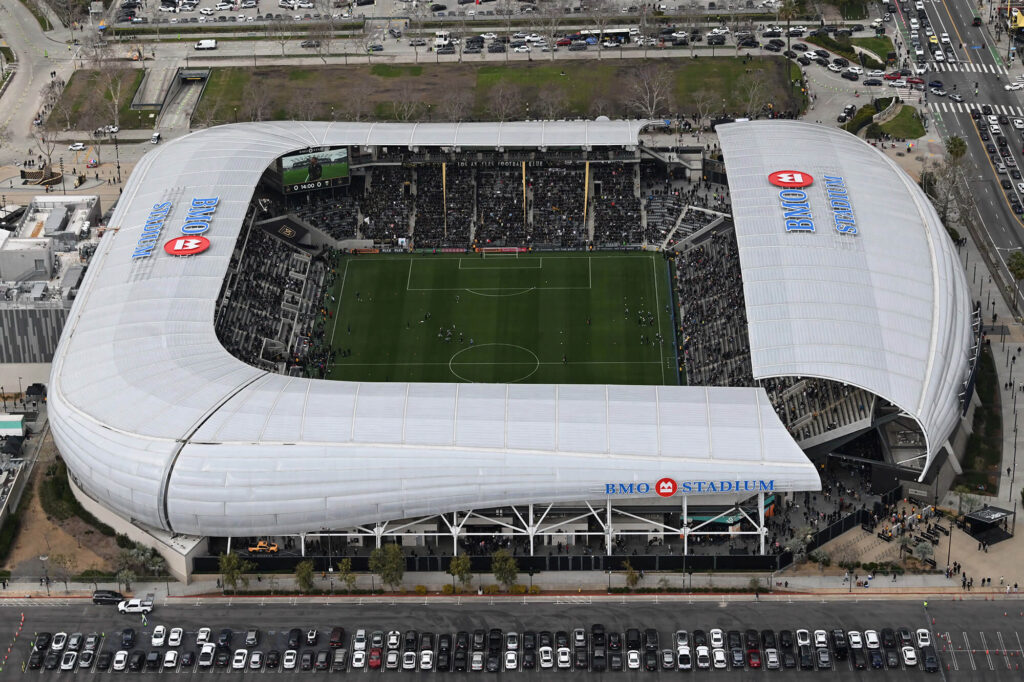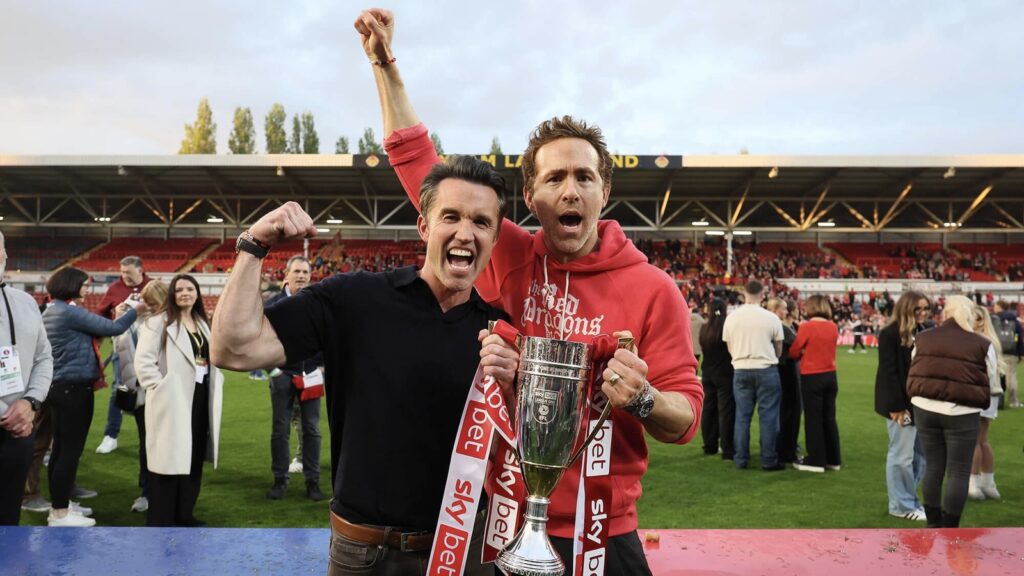In the United States, sports have long been a key part of the entertainment industry. From the NFL to NBA, American sports are so big that they have their businesses on the side. Soccer, once considered a distant cousin to these giants, is quickly rising to be among them. Soccer clubs in the States, with their growing fanbase and glamorous sponsorship deals, are becoming large-scale businesses. This article breaks down how that’s happening – and what it means for fans.

How Do Soccer Clubs Make Money?
Much like in any other sports franchise, U.S. soccer clubs have revenues coming in from sponsorships, ticketing, merchandise, media rights and stadium deals.
1. Sponsorships and Advertising:
Corporate sponsorship is one of the biggest income avenues for MLS clubs. Companies are willing to pay massive dollars to have their logo on everything – from jerseys to stadium walls to digital content. For instance, Apple inked a $2.5 billion 10-year global rights deal for broadcasting MLS in 2023, meaning a big employer is looking at the growing footprint of this sport in the U.S.
2. Stadium Revenue:
Soccer-specific stadiums are cropping up all over the country. Such an arena is an ecosystem for business – income is generated from luxury suites, food and beverage sales and naming rights. They;re also employing the stadium for activities other than soccer, such as concerts. LAFC‘s BMO Stadium and Nashville SC‘s Geodis Park are examples of infrastructure investments made for year-round revenue enhancement.

3. Media and TV Rights:
Television and streaming rights are crucial. The Apple TV deal mentioned above gives MLS global reach and consistent income. Regional sports networks and national broadcasters also pay for game rights. These deals help bring in funds while exposing the sport to new fans.
4. Merchandising:
Jerseys, scarves, caps, and more—soccer gear is a huge business. Clubs regularly launch new kits to boost sales, often with special edition designs. The global appeal of soccer also allows U.S. teams to sell to fans beyond national borders, especially when international stars are on the roster.
Big Brands and Sponsors in MLS
Big companies are now lining up to work with MLS teams, just like they do with NFL or NBA franchises. These partnerships go beyond logo placements—they’re part of wider brand strategies.
Tech and Media Giants:
Apple’s involvement with MLS is a game-changer. It signals a shift toward treating soccer content as premium entertainment. Amazon and YouTube have also shown interest in soccer-related programming, offering another potential revenue stream for teams.
Financial and Travel Brands:
Banks, airlines, and credit card companies are also major sponsors. For instance, Ally sponsors the North Carolina Courage in the NWSL, and Delta partners with several MLS clubs. These brands use soccer to connect with younger, diverse, and globally aware consumers.
Beverage and Apparel Brands:
Coca-Cola, Heineken, Adidas and others are traditional supporters of soccer worldwide. Now, they’re also making big moves in the US. Adidas is the official kit supplier of all MLS teams, while Heineken sponsors multiple stadium experiences.
How U.S. Owners Run Teams
In the U.S., many soccer team owners come from the worlds of tech, media and finance. They approach clubs not just as sports teams but as full-fledged entertainment brands.
1. Clubs as Media Brands
Owners like David Tepper (Charlotte FC), Arthur Blank (Atlanta United), and celebrities like Matthew McConaughey (Austin FC) see soccer as content that lives on TV, social media and beyond. Teams are often promoted like Hollywood movies. This includes trailers, player reveals and behind-the-scenes documentaries.

2. Data-Driven Management
These owners use business analytics and digital engagement tools to improve decision-making. Fan data helps teams build loyalty programs, improve marketing and boost ticket sales.
3. Franchise Model and Expansion Fees
MLS operates with a single-entity structure and expansion fees – where new teams pay to join the league. In 2023, San Diego FC paid a record $500 million to join MLS. This model attracts investors because it shares risk and rewards across the league while keeping operations stable.
The Mix of Sports and Entertainment
Soccer in the U.S. is now deeply tied to the entertainment world. Teams don’t just sell games—they sell experiences.
Stadium Events and Shows
Clubs often feature live DJs, fireworks, celebrity appearances and themed matchdays to make games feel like full-day festivals. This keeps fans engaged even if the team isn’t winning every week.
Social Media and Streaming
Clubs use platforms like TikTok, YouTube, and Instagram to create viral moments, from locker room scenes to hilarious interviews. This content is key for attracting younger fans who consume sports differently.
Celebrity Involvement
High-profile owners, like Ryan Reynolds and Rob McElhenney at Wrexham (although UK-based, their influence is felt in U.S. circles), inspire a similar approach here. Many MLS clubs now look to pair traditional ownership with entertainment figures who can elevate the brand.
Cross-Promotion
Soccer clubs often partner with local businesses, music festivals, or fashion brands. Inter Miami, co-owned by David Beckham, blends soccer culture with nightlife, Latin music and celebrity culture, making matchdays more than just 90 minutes of play.

What Fans Think About the Business Side
As soccer grows into big business in the U.S., fans have mixed feelings. Some love the upgrades, while others worry about losing the soul of the game.
Positive Reactions
Many fans enjoy the high-quality stadiums, easier access to games via streaming and the arrival of global stars like Lionel Messi. They appreciate how clubs invest in youth academies and community programs. This brings long-term value to cities.
Concerns About Over-Commercialization
However, some traditional supporters feel sidelined. Rising ticket prices, excessive sponsorships and a shift toward “entertainment-first” presentation can make the sport feel less authentic. Older fans who grew up watching European leagues often prefer a more grassroots, pure soccer experience.
Changing Fan Identity
The newer generation of fans sees soccer as a lifestyle. They follow teams not just for local pride but for the culture surrounding them. It could be music, fashion, social values or even digital content. This shift is helping grow the sport, but it’s also redefining what it means to be a “true fan.”
The Future of Soccer as Entertainment Business
Soccer is no longer just an underdog sport in the U.S. — it’s becoming a major part of the entertainment business. Clubs are embracing modern tools to make money, from sponsorships and media deals to stadium experiences and social media branding. Owners treat teams like lifestyle brands, merging sports with music, fashion, and tech. For fans, this means more access and excitement, but also more commercial influence.

As soccer continues to grow, it must find the right balance—staying true to the game while embracing the new business of sports entertainment. One thing is clear: soccer is here to stay, and in the United States, it’s becoming big business fast.
